#umayyad mosque
Text

Gate of the Great Umayyad Mosque, Damascus
Gustav Bauernfeind. 1890
Oil painting.
#histort#vintage#1890#painting#oil painting#umayyad mosque#damascus#Gustav Bauernfeind#david tennant#baftas#bafta 2024#eurovision#c4news#bethlehem#ethnic cleansing#doctor who
15 notes
·
View notes
Text

4th March
Ṣalāḥ ad-Dīn Yūsuf ibn Ayyūb
1193
Are the birds draped in black as a memorial to the great warrior or a premonition of what would engulf Damascus within a few years?
0 notes
Text
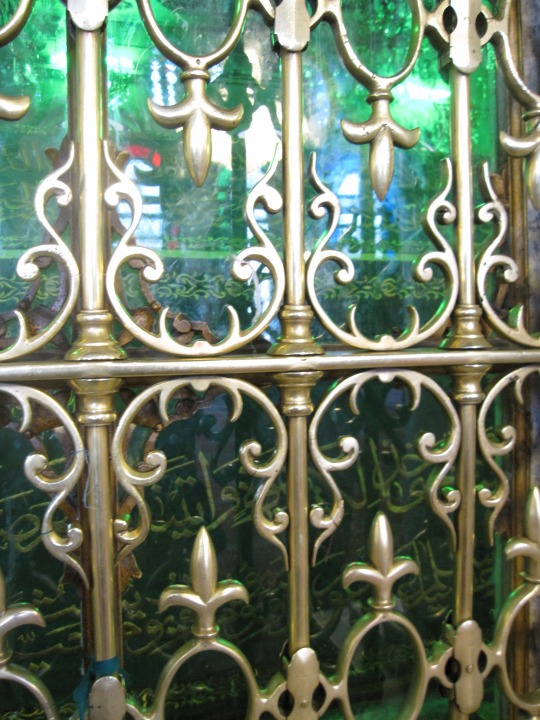
06/18/2010
0 notes
Text
Hello, I haven't used tumblr in a while but I used to be an avid user--
I've been searching online for a way to find out about a few countries but reddit-no dice and I pretty much ran out of ideas after that so here I am on tumblr trying to find some assistance. If you've been or live in one of these countries...Tell me about it :)
1)Yemen (specifically Al-Saleh Mosque)
2)Ughyur (International Bazaar) - I know how unlikely it will be that I find someone on here that knows anything about this country and what's going on but I'm shooting my shot.
3)Al Aqsa Mosque/ Palestine in general
4) Syria (Damascus -Umayyad Mosque)
5)Iran (Nasir Al Mulk Mosque)
6) Somalia (Hargeysa)
Thank you in advance to everyone who is able to help.
#Ughyur#Somalia#al aqsa mosque#Palestine#syria#iran#Damascus#دمشق#Nasir al mulk Mosque#Umayyad Mosque
0 notes
Text
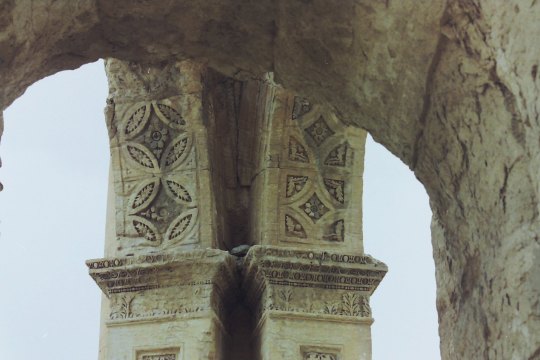

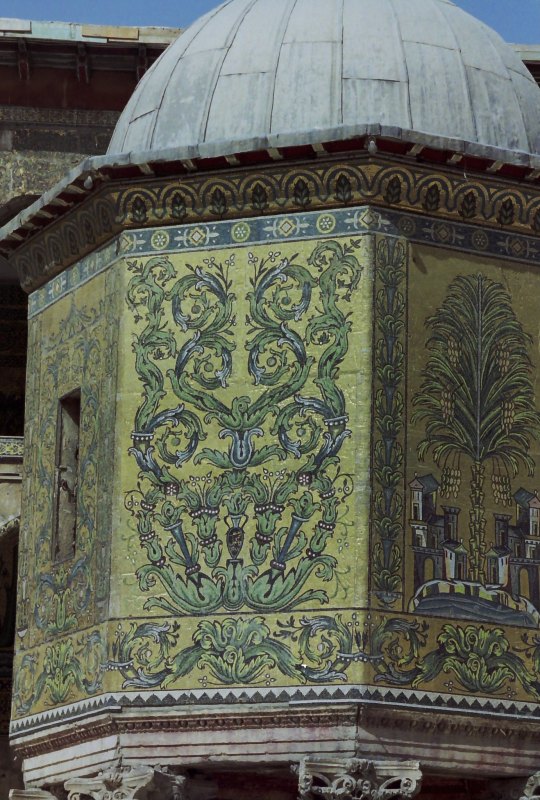
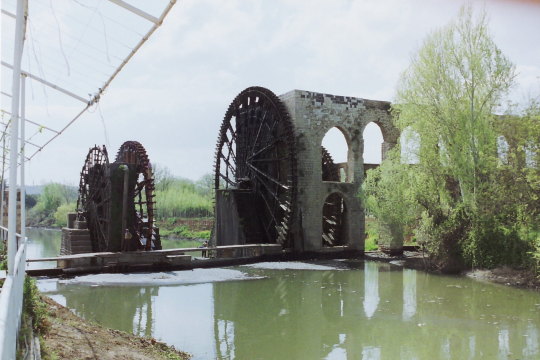

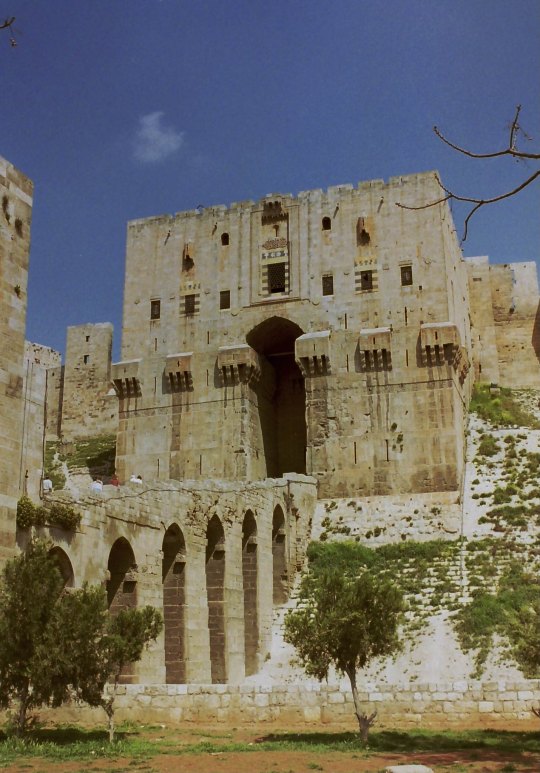
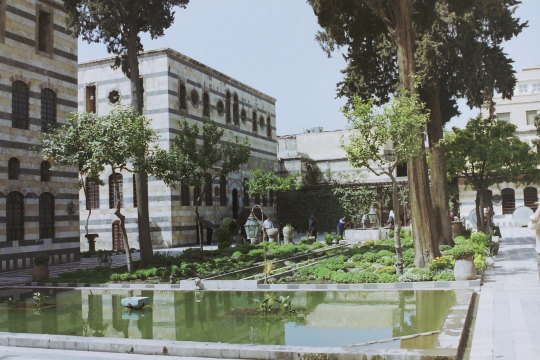
Syria, 1993. (2) (3) (4) (5) (6) (7) by jpotto
Via Flickr:
(1) Palmyra.
(2) Secluded square off Straight street, Damascus.
(3) Ommayed mosque, Damascus.
(4) Hama, waterwheels.
(5) View from the Citadel.
(6) Citadel, Aleppo.
(7) Al Azem palace garden, Damascus.
#ruins#stone carvings#chairs waiting#umayyad architecture#historic buildings#garden#1990s#syria#damascus#aleppo#mosque
27 notes
·
View notes
Text
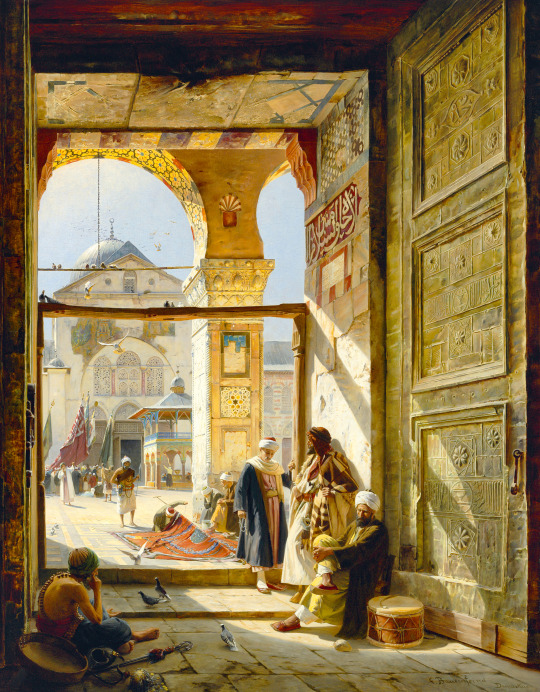
Gustav Bauernfeind - The Gate Of The Great Umayyad Mosque
Dünən doğum günümdə aldığım hədiyyə. Bir neçə il öncə öz evim,otağım olduğu zaman bu əsəri divarda görmək istəyirəm demişdim.
Kiçik detalları xatırlayan, dəyərləndirən insanları itirməyin.
15 notes
·
View notes
Text

The Umayyad Mosque in Damascus, Syria
French vintage postcard
#vintage#tarjeta#briefkaart#postcard#damascus#photography#postal#syria#carte postale#sepia#ephemera#historic#mosque#french#ansichtskarte#postkarte#umayyad#the umayyad mosque#postkaart#photo
2 notes
·
View notes
Text
There appears to have been an extended period of coexistence between Christians and Muslims in the region.
“Christian monasteries and churches were in use in some places until the ninth century,” says Michael. “It’s possible that the mosque we uncovered in Rahat was visited at the same time as Christian places of worship nearby.”
In Israel’s Negev Desert has revealed evidence of the effects of Islam in the region between the seventh and ninth centuries A.D. Researchers discovered multiple buildings dating to the Umayyad (A.D. 661–750) and Abbasid (A.D. 750–1258) periods, including a mosque dating to the seventh or eighth century A.D. Roughly 400 yards away, the team discovered the ruins of a palatial Islamic-style building thought to have belonged to a local ruler, featuring walls decorated with frescoes and stone hallways arranged around a central courtyard. Beneath the courtyard, the team unearthed a 10-foot-deep, rock-hewn cistern system.
#history#archeology#archeologicalsite#discovery#early christianity#muslim#mosques#monastery#holy sight#Umayyad caliphate#medieval period#israel#religious coexistance
4 notes
·
View notes
Note
you didn't actually answer my question , Temple Mount is the most ancient and holiest site for Jewish people -- the Dome of the Rock & Al-Aqsa Mosque were built hundreds of years later on behalf of the Umayyad dynasty's conquest. you mentioned in your response a massacre that happened centuries later, which does not relate to the fact that Jews cannot pray at this site (their utmost holiest site before even the existence of Christians or Muslims). how is "temple denial" something that I made up when you can research it right now and see what it is and that it exists? I ask because this seems to be actually a blind spot for many non-Jewish people simply because it doesn't affect them. I'm not intending to be argumentative and I am sorry if my English is bad in getting across
I'm sorry for being argumentative but a lot of the time, whenever Palestinians are asked about temple mount, there's an implication that Palestinians are colonizers and don't deserve to be on the land. Israelis, if they could, would completely ban Muslims from AlAqsa despite it being the third holiest site in Islam.
AlAqsa is probably the most important national symbol of Palestinians, often thought to be the last straw for Palestinian heritage. So much of our culture has been robbed from us, and (primarily muslims) believe that the demolition of AlAqsa, which is, as Mohammed ElKurd puts it, is one of the last places in all of Palestine where being Palestinian is not criminalized would be a fundamental loss we would never recover from, equivalent to losing our Balad.
I bring up the Ibrahimi Mosque Massacre because there are no restrictions for extremist settlers legally — they operate as an arm of the state and in some cases are encouraged to committ these acts. The "Apartheid Law" basically enshrined that settlements are a national value for Israel. This means that there is no safe haven for Palestinians legally. They're in constant danger of getting kicked out of their home or getting arrested for existing. I cannot emphasize enough how Palestinian freedom is so restricted with the explicit intent of pushing them out of the land.
Temple denial as a concept (after looking it up) seeks to paint Palestinians in a fundamentally bigoted and violent light. Palestinians are not allowing Jews in AlAqsa not because they hate Jews, but because that opens the way for settlers to become violent around AlAqsa, which a lot of the time is already happening. I suggest reading "Why Do Palestinians Burn Jewish Holy Sites? The Fraught History of Joseph's Tomb" (sorry the link is not linking, but you can look it up on the palestine institute webpage). It discusses the use of history as a colonial tool. Here's an excerpt:
It is one of many shrines across historic Palestine – now split into Israel, the West Bank, and Gaza – that has been re-invented as exclusively Jewish, despite a long history of shared worship among Jews, Christians, Muslims, and Samaritans that goes back centuries. And the reason it has been attacked has almost nothing to do with religion, and much to do with how the Israeli military and settlement movements have used religion as a way to expand their control over Palestinian land and holy places.
And a second excerpt describing the political use of religion:
But the claims of biblical archaeologists had a strong role in how the Zionist movement would come to understand and conceive of the landscape.6 As European Jews migrated to Palestine in the first half of the twentieth century, they drew upon biblical archeology's claims. They adopted archeologists' claims that Palestinian holy sites were directly linked to ancient biblical figures. In many cases, they focused on occupying those sites in order to legitimize the colonial endeavor by giving it a sense of deeper history. In many cases, this would mean evicting the Palestinians who actually frequented these holy sites.
And what Palestinians are afraid of:
In 1975, the Israeli military banned Palestinians – that is, the Samaritans, Muslims, and Christians living around the site – from visiting, a ban that has remained in place until this day. [...] Unsurprisingly, the ban has ignited intense anger over the years. This is true particularly given that frequent visits by Jewish settlers to the shrine are accompanied by hundreds of Israeli soldiers, who enter the area and run atop the rooftops of local Palestinians to “secure” the tomb. As a result, Joseph's Tomb has increasingly become associated with the Israeli military and settlement movement in the eyes of Palestinians. Its presence has become an excuse for frequent military incursions that provoke clashes and lead to arrests and many injuries in the neighborhood. Some fear that Israelis will attempt to take over the shrine to build an Israeli settlement around it. This fear is not unfounded, given the fact that Israeli settlers have done exactly that all across the West Bank in places they believe are connected in some way to Jewish biblical history. The notoriously violent Jewish settlements in Hebron, for example, were built there due to the location of the Tomb of the Patriarchs in that southern West Bank town. Following the initial years of settlement, settlers even managed to convince Israeli authorities to physically divide the shrine – which is holy to local Palestinians – and turn the whole area into a heavily-militarized complex. Other shrines have become excuses for the Israeli military to build army bases inside Palestinian towns, like Rachel's Tomb in Bethlehem – which is surrounded by twenty-foot high concrete walls on three sides to block Palestinian access. The village of Nabi Samwel near Jerusalem, meanwhile, was demolished in its entirety to provide Jewish settlers access to the tomb at its heart.
I'm not denying the temple mount is there. I'm just saying that history has been manipulated to erase centuries worth of cultural heritage through scholarship and Palestinians are protective of their most important symbol of resistance and life. Even you saying "Islam and Christianity came after Judiasm" is a dogwhistle for me, because a lot of the time extremists say that to completely erase AlAqsa as an important site to Muslims and intending to deny the site as a shared worshipping site that is quite important to Muslims. Just because Islam came after Judiasm, does that mean it's not legitimate as a religion itself? Islamically, Islam is a continuation of Judiasm, so we don't deny judiasm is important to AlQuds. We just are so concerned with losing our national symbol that we're so protective over it.
Now I bring up the massacre at ibrahimi mosque because, like mentioned in the excerpt above, Palestinians are afraid something like that will happen again. There's no protections for Palestinians, and most of the time they're denied from praying in AlAqsa themselves by Israeli authorities. Israeli settlers themselves come in and disrespect AlAqsa, and as I mentioned, extremists plan on demolishing AlAqsa to build a Third Temple. The Massacre at the Mosque paved way to the "Jews Only" streets I mentioned, including the militarization and basically a complete upheaval of normal life for Palestinians. I suggest looking into how terrible the situation in AlKhalil is, and that arised directly from the massacre.
You cannot separate this issue from the colonial implications of the last safe haven in all of Palestine being open to Israelis. Now when Palestine is free, I doubt there would be restrictions. But right now, there are and to pretend Israelis don't pose a threat to Palestinians fundamentally, would be erasure of the colonization of Palestine.
I'm sorry if that sounds harsh, but even if AlAqsa was built hundreds of years after, it doesn't change the fact that RIGHT NOW Israelis have privilege that Palestinians do not. As soon as that privilege is no longer there, then we can talk about allowing Jews there. But until then, Palestinians are constantly in danger of settler violence and to take away a space (which, Ibrahimi Mosque was one of those sites before Palestinians were massacred) is frankly, an insult and a denial that Palestinians themselves are colonized.
I suggest looking at the links I provided earlier for more in depth analysis. I'm going to reiterate: the only reason it's illegal is because Palestine is colonized and this is our last safe haven that we even aren't completely allowed from entering ourselves.
Most Palestinians are quite heated about this topic. It genuinely is considered one of our last national symbols (so not just religious but also political and cultural), which means that having that taken away (which extremist settlers plan on demolishing it completely, and if they're allowed in, then there are no restrictions on their behavior) would be tantamount to losing our balad, or nation. I've heard Israelis call AlAqsa terrible names over the years and some fully intend on demolishing the site. Even within Israeli politics, it is a genuine goal for some people, including Ben Gvir, so most believe that opening the door for settlers (who are the ones who want the destruction of AlAqsa) would be equivalent to giving it up. You can't ignore that when talking about AlAqsa and the laws surrounding it. The primary reason for this protectiveness is political and cultural.
#palestine#the second intifada happened because ariel sharon forced his way in for political reasons#palestinians were so angry and took it as an insult (which it was) that the second intifada happened
271 notes
·
View notes
Text





ruins of the white mosque of ramla, palestine. construction was initiated by umayyad governor sulayman ibn abd al-malik in 715-717 ce, but was completed by his successor umar ii in 720.
an earthquake in january of 1034 destroyed the mosque, and reconstruction was completed 200 years later. it since had several destructions, restorations, and expansions, including one restoration by saladin. the last took place between 1844-1918; since then, it has been mostly destroyed, with only its minaret still intact.
the mosque is reputable in muslim tradition; its minaret is referred to as the tower of forty martyrs, after the belief that forty companions of the prophet muhammad are buried under it. within local muslim tradition, it's believed that the prophet salih was also buried here, and a maqām in his honor is located nearby. a religious celebration of salih used to take place here annually before the nakba.
below the mosque's courtyard also exist three large cisterns (last two pictures) which provided water for worshippers, including for a former pool for wudu.
#palestine#architecture#worship#muslim#nakba#religious tombs#my posts#there's another maqām dedicated to salih in acre#also to clarify it’s been ruins since the earthquake#(i think)
263 notes
·
View notes
Text
Please reblog for a bigger sample size!
If you have any fun fact about Syria, please tell us and I'll reblog it!
Be respectful in your comments. You can criticize a government without offending its people.
100 notes
·
View notes
Photo

Gustave Bauernfeind, Forecourt of hte Umayyad Mosque, Damascus, 1890. Oil on panel
284 notes
·
View notes
Photo
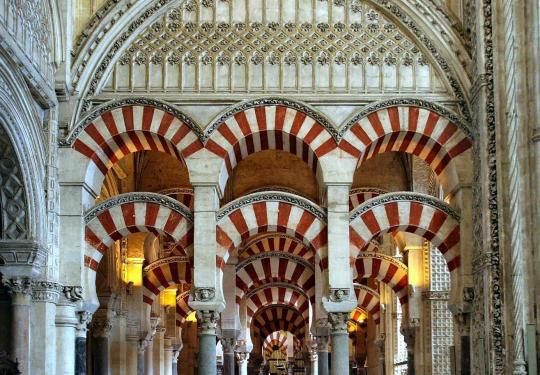
MWW Artwork of the Day (6/24/23)
Umayyad Spain (Moorish, 8th-15th c.)
Interior view: Great Mosque-Cathedral (8th c. CE)
Córdoba, Spain
The building is most notable for its giant arches, with 856 columns of jasper, onyx, marble and granite. These were made from pieces of the Roman temple which had occupied the site previously, as well as other destroyed Roman buildings. The double arches, pictured above, were a new introduction to architecture, and helped support the tremendous weight of the higher ceilings. The double arches consist of a lower horseshoe arch and an upper semi-circular arch. The famous alternating black and white voussoirs of the arches were inspired by those in the Dome of the Rock. They resemble those of Aachen Cathedral, which were built almost at the same time.
105 notes
·
View notes
Note
(i hope these questions aren't offensive or insensitive, but i've been curious about them for a while)
i know that one of the main differences between shi'a and sunni muslims involves hereditary vs. political succession, but i'm not sure about the details, or even the broad strokes
1. what role does heredity play in shi'a beliefs?
2. how do you feel about the idea of hereditary succession?
The thing is that Ali was intended to be the successor of the Prophet following the latter's death. Various hadiths state that Ali was chosen (Hadith of the Two Weighty things, Hadith of Ghadeer Khumm, Hadith of the cloak and Hadith of the Pen and Paper). Initially it was all a political dispute; when the Prophet died, the Prophet's household washed his body and performed the burial rites. It is obligatory for every Muslim to perform it, especially considering that it's the PROPHET. Anyways, so Abu Bakr and Umar weren't present for the burial procession and had other matters to attend (lol) and disputed with a different tribe regarding the issue of succession. The dispute left one dead and Abu Bakr was ultimately nominated for the caliph, whereas the opposing tribe accepted the nomination. The issue regarding this meeting was that every other Muslim, including Ali, was left in the dark, not knowing about the events that took place, thus causing Ali to oppose Abu Bakr and Umar. According to Sunnis, they shortly reconciled, while Shi'as belive that it's nothing more than a forgery intended to erase the reality of the situation, so no Muslim can question them. Ali continued to oppose Abu Bakr from behind, while having the support of the Prophet's daughter. Abu Bakr saw Ali as a threat to his caliph and sent Umar to force his pledge of allegience to him, in which various Muslims threated to burn down his house inside of the Prophet's Mosque. Not yielding to their demands, they tried to break in. However, the Prophet's daughter prevented them from entering until the forced the door open, causing the Prophet's daughter to be damaged by the force of the door, leading to her miscarriage and death six months later. Ali was dragged with a rope around his neck to Abu Bakr and swore his allegience. This would be the first of many calamities that would befall Ali, Fatimah and his descendents. Abu Bakr, Umar and the following caliphs of the Umayyads and Abassids knew the truth, but was too blinded by their avarice and lust for power. The caliph became a monarchy and palaces were built on the money of the poor. A form of capitalism became the root of despair for the Shi'as.
The aforementioned hadiths are clear upon the hereditary roles of the Shi'a Imams through the Prophet's daughter and all Shi'as, whether Twelver, Ismailiyya or Zaidiyya claim that Ali and his children were to inherit the caliphate as a spiritual guide, not kings.
38 notes
·
View notes
Text
11th part of the bookscans of Al Andalus. Historical Figures, here's the previous part

The Emir Abd Allah: distrust and death
The throne of Cordoba came to Emir Abd Allah a bit of a glancing blow after his death in rather strange circumstances, from his brother, the emir al-Mundhir, who
was barely in power for twenty-three months. Many historians, both Arab
and Christians, contemporary or modern, they believe that Abd Allah was no stranger to this death and Dozy does not hesitate to describe this emir as a fraticide.
Both brothers were born in the same year, both to slave mothers, but physically they couldn't be more different. Al-Mundhir was black-haired and had curly hair, dark eyes, and a pockmarked face. Abd Allah, on the contrary, was of average height, blonde hair and blue eyes, like many of the princes of the Umayyad dynasty, sons of Basque women.
When he acceded to the throne he was forty-four years old, with a solid education
cultural and was well versed in religious sciences. Every day he recited a part
of the Koran and his rather strict religiosity meant that he always had his part to the alfaquíes, even in the hardest moments, and

that they would never reproach him for his acts, sometimes of great cruelty.
Abd Allah was a man of simple tastes and an austere life, to whom the opinion of his subjects mattered, especially those of Cordoba, and thus, he ordered a door to be opened in the Alcázar area where, once a week, he sat down to listen to the citizens' complaints. But the great defect, or the
This emir's big problem was an unhealthy distrust of everything and towards everyone, which would mark his life... and that of many of his family members in a fatal way.
Every Friday he attended prayer punctually at the main mosque, but to move from the palace to the sacred precinct, he had a covered passage built that led to an outbuilding of the mosque. This precaution, which none of his predecessors had taken, kept him safe from possible attack of some discontent, which already gives us an idea of the fear and the insecurity that Abd Allah suffered about those around him.
His pity and distrust of men, when he deeply felt the solitude and fear made him write verses as beautiful and sad as these:
“All things in this world are transitory; nothing down here lasts. Make haste, then, sinner, to bid farewell to all worldly vanities and convert. Soon you will be in the coffin and they will throw wet earth on your face was so beautiful before. Dedicate yourself solely to your religious duties, give yourself over to devotion and see that the Lord of heaven is favorable to you."

Given what his life was like, we do not know if Abd Allah had these reflections, overwhelmed, perhaps, by the blood shed.
Arab historians, like Christians, rarely spoke ill of the powerful on duty. Only, in this case, the historian Ibn al-Qutiyya and the incorruptible Ibn Hazm, they will say, clearly, that Abd Allah got rid of al-Mundhir to make himself with power, and how he had no mercy towards his own when the slightest shadow of uspicion could tarnish what he considered loyalty should be.
This emir had eleven children: seven before acceding to the emirate and another four after. The eldest of them, Muhammad, was designated heir, as was customary. The prince's mother was not just any princess-mother. She was a princess
Basque woman named Oneka, great-granddaughter of Eneko Aritza who, in a second marriage, married Abd Allah. But this son, at twenty-seven years old, would pay with his life for a possible
plot against his father that could never be proven. The chroniclers of the time,
wanting to exonerate the emir, they present the event to us in the following way.
Al-Mutarrif, five years younger than Muhammad, desired to be the heir, and
began to intrigue against his brother, until Abd Allah, under suspicion, that he was plotting against him, he ordered him imprisoned. But this plot could not be
try, and when the heir was about to be released, al-Mutarrif, blind with anger, he entered where his brother was imprisoned in the Alcazar and stabbed him to death. It was January 29, 891. Was it like that, or was it

rather an act carried out under the authorization of the emir? All seems to indicate that the emir was aware of what was going to happen, since when Abd Allah wanted to punish the guilty, there were the dignitaries of the court ready to dissuade him so that the murderer would not suffer any harm. And how ferocious Abd Allah's response used to be, he listened to them and the fraticicide did not
suffered some harm!
But al-Mutarrif's life was not going to be very long either. This prince had repeatedly shown his contempt for the alfaquis and this was something that the religious leaders were not going to forgive him. He must have been a man of violent character because, in addition to the death of his brother, he was attributed also that of the emir's favorite vizier and general, whom it was easy to convince to that his son was conspiring against him in the lands of Seville. It seems that it was true and
this along with the advice of the alfaquíes to get rid of him, they convinced Abd Allah to have al-Mutarrif beheaded in his
presence. He already had two dead children under his belt.
The pathological distrust, which must have made him suffer a lot, it also wreaked havoc on their families. No one was safe from the revenge of the emir, not even those closest to him. Every time a complain reached their ears, no matter how absurd or slanderous it was, whoever
it was, even if it was a family member. On September 23, 897, only two years after the death of al-Mutarrif, Hisham, a son of
Muhammad I, accused, of course, of a conspiracy that was totally false. A cadi could have saved his life, but, undoubtedly intimidated by the summary actions of the emir, he did not dare to say anything.

Al-Qasim, brother of Abd Allah, died poisoned by order of the emir under the
same accusation of conspiring against the crown... It could be said that this emir had shed more of his own blood than that of others.
He had a turbulent reign, plagued by rebellions in all the lands of Al-Andalus. Political unity was broken and the Umayyad dynasty was about to falter
in Spain. However, in the most pressing moments, Abd Allah, like to his faith:
“Let others put their trust in the great number of their soldiers, in their
war machines, in their value; I put mine only in God, the only one eternal!".
We do not know if the emir frequently thought about all those “crimes of
state” that touched him so closely, and he considered that the innumerable incidents that occurred during his reign were a punishment for his arbitrariness. If so,
distrust and insecurity, the endless struggles within Al-Andalus itself and an innumerable series of problems, should not have undermined his health, because
Abd Allah died, already an old man, in Córdoba on the night of October 15 to 16,
912.
None of his children would inherit the throne, such was the mistrust that the emir felt towards all of them. His successor would be his grandson, the son of Muhammad, who died alone twenty days after this child, Abd al-Rahman, came into the world.
All the love that Abd Allah was capable of feeling was placed in that child, who
gathered the blood of the Umayyads and the

Basque princes, since we must not forget that his mother was one and his grandmother, Oneka, daughter of kings, from Fortún the One-Eyed, too. Good for remorse, for having deprived that child of his father, possibly unjustly, either because he had a brilliant intuition, Abd al-Rahman III would re-establish the Umayyad power and would give al-Andalus its days of greatest splendor.
None of his relatives showed any opposition to this enthronement. The brothers and sons of Abd Allah swore submission to the new emir without a hint of ill will and there was never any attempt at rebellion against him. After what they had seen in grandfather, it was not unreasonable to think that the grandson could act in the same way. Just in case, everyone was quiet and Abd al-Rahman III will be tolerant and the least fanatic of all the Umayyads, and will never allow anyone to question the cruel actions of his grandfather to whom, after all, he owed the throne.
#al andalus historical figures#al andalus personajes históricos#book scans#bookblr#historyblr#al andalus#al andalus history#history books#spanish history#emirate of cordoba#emirato de córdoba#abd allah i#abd allah i of córdoba#umayyad dinasty
6 notes
·
View notes
Text
What is Islamic Architecture?
Islamic Architecture is an architectural style that dominates Muslim-majority countries around the world such as Indonesia, Pakistan, Egypt, Saudi Arabia, Turkey and many more, but is not limited to these locations. Islamic architecture can be found across the globe - though the architecture in other locations may not hold all the main characteristics - there are definite elements that have been incorporated into the western, modern world, (The Spruce., 2022).
This architectural style is associated with the religion of Islam, and has evolved from various other architectural styles like that of Mesopotamian and Roman.
Islamic architecture has several characteristics that are recognisable to even the untrained eye; the use of colour, geometric shapes, symmetry, patterns and calligraphy define the architectural style (Invaluable., 2020). This style of architecture is typically associated with religious establishments in Islam such as the Mosque, but is not restricted to this, the style extends to palaces, tombs, forts and public buildings. One of the oldest elements to identifying Islamic architecture is the presence of Minarets and domes. Minarets are tower-like structures with small windows and enclosed spiral staircases made for muezzins (a man who calls Muslims to pray) to call to worshippers from a high point. The minarets often feature one or more balconies. The forms of the minarets commonly seen range from thick, squat, spiral ramps to soaring, delicate, pencil-thin spires, with the base usually being square in shape. The number of minarets located in a Mosque will vary from one to six and they stand as landmarks of Islam.
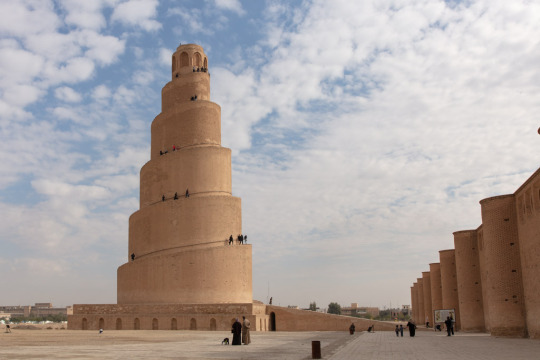
Grand Mosque of Samarra and the spiralling Malwiya Minaret (Adventures of Nicole., 2022).
Domes (like several other architectural movements such as Renaissance and Byzantine) are also a regular feature of islamic architecture.
The first Islamic design featuring a dome is a 7th century shrine in Jerusalem - Dome of the Rock, Arabic Qubbat al-Ṣakhrah. Dome of the Rock was built by Umayyad caliph (chief Muslim civil and religious ruler of the first Muslim dynasty) 'Abd al-Malik ibn Marwān. The structure is situated on a flat elevated plaza known to Muslims as 'The Noble Sanctuary' (al-Haram al-Sharīf), and the rock above which the dome is located is the spot the propet Muhammad was taken up into heaven for an encounter with God (Mi'rāj), (Britannica., 2014).
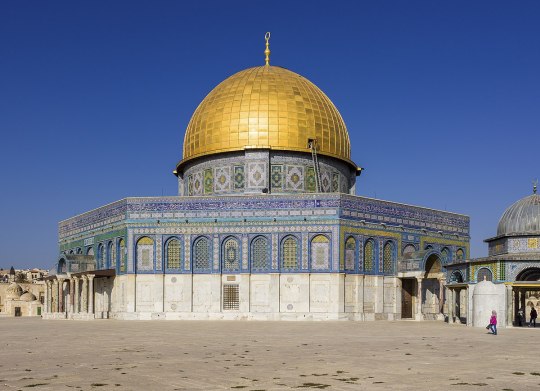
Dome of the Rock, Jerusalem, 691-692 CE.
Most domes rest on pendentives which are constructional devices used to place circular domes over square or rectangular shaped rooms. You can recognise pendentives as Islamic architecture by its decorative tiles or muqarnas - a form of ornamental vaulting, (IvyPanda.,2020).

Diagram of pendentives.

Muqarnas and decorative tiles example.
The most important piece of indo-Islamic architecture os the tomb of the Shah Rukn-i-Alam in Multan. This tomb was built between 1320 and 1324 CE by Giyath al-Din Tughluq in the pre-mughal, architectural style, Giyath was the governor of Diplapor (a city in the Okara District of the Punjab, Pakistan) and is thought to have been built to serve as a tomb for himself. However, it was presented to the family of the renowned Sufi saint Sheikh Rukn-ud-Din Abul Fateh (Sacred Sites., 2020). The tomb is an octagonal shape, 35m high and structured by red brick with a visible frame of beams and shisam wood, and further designed with the use of carved brick, wood blue and white faience mosaic tiles with raised relief patterns. The octagon is decorated with geometric, floral, and arabesque designs and calligraphic motifs. The interior was originally plastered but is now bare and the sarcophagus is surrounded by 72 of his descendants. The saint is still held in high esteem and the tomb is the focus of over 100,000 pilgrims from all over South Asia who visit in order to commemorate his memory, (Unesco., 2004).
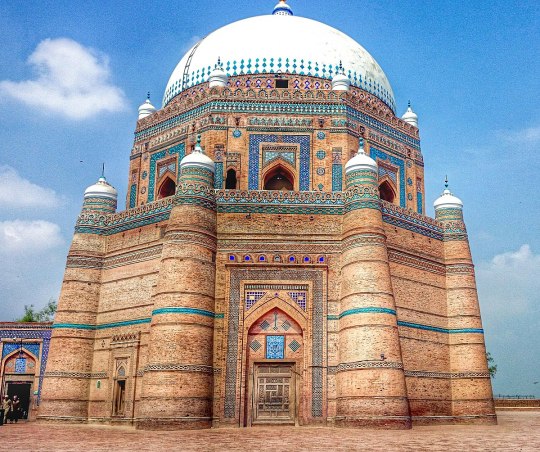
Shah Rukn-i-Alam, Multan, Pakistan.
Arches are yet another prominent feature of identifying Islamic architecture, and their placements usually define the entrances to buildings and rooms. There are several types of arches including: Pointed Arches, Ogee Arches, Horseshoe Arches, and Multifoil Arches. The double arched system of the Mosque-Cathedral of Córdoba, the pointed arches of the Al-Aqsa masque provide excellent examples of how arches become indispensable features of Islamic architecture (Rethinking the Future., 2023).

Double Arches of Mosque-Cathedral of Córdoba
The majority of mosques and palaces falling under the style of Islamic architecture feature courtyards and can house large gatherings of people during festive occasions and prayers. The courtyards will feature fountains for the people to perform ablution before prayers.
Now that there has been an introduction into what it takes to create for Islamic styled architecture, the rest of the blog is open to deeper dives of certain establishments, countries, and architects themselves,
Thank you for reading, I hope you enjoyed!
Summer Marshall-Miller
BIBLIOGRAPHY: Hohenadel, K. (2022) The Spruce. Available at: https://www.thespruce.com/what-is-islamic-architecture-5120474 (Accessed 20 January, 2023)
Britannica, The Editors of Encyclopaedia. (2014) Encyclopaedia Britannica. Available at: https://www.britannica.com/topic/mosque (Accessed: 20 January, 2023)
Unknown Author (2020) Invaluable. Available at: https://www.invaluable.com/blog/islamic-art-patterns/ (Accessed: 21 January, 2023)
IvyPanda (2020) 'Muqarnas in Islamic Architecture'. Available at: https://ivypanda.com/essays/muqarnas-in-islamic-architecture/ (Accessed: 24 January 2023)
UNESCO (2004) Tomb of Shah Rukn-e-Alam. Available at:https://whc.unesco.org/en/tentativelists/1884/#:~:text=The%20tomb%20of%20Shah%20Rukn,saint%20following%20the%20latter%27s%20death (Accessed 7th December 2022).
Unknown Author (2023) Rethinking the Future. Available at: https://www.re-thinkingthefuture.com/architectural-styles/a2589-10-distinctive-elements-of-islamic-architecture/ (Accessed: 23 January 2023).
Nicole Smoot (2022) The Adventures of Nicole. Available at: https://adventuresoflilnicki.com/samarra-iraq/ (Accessed: 23 January 2023).
#architecture#islamicarchitecture#art#history of art#islamic#mosque#history#my blogs#student#major project
33 notes
·
View notes